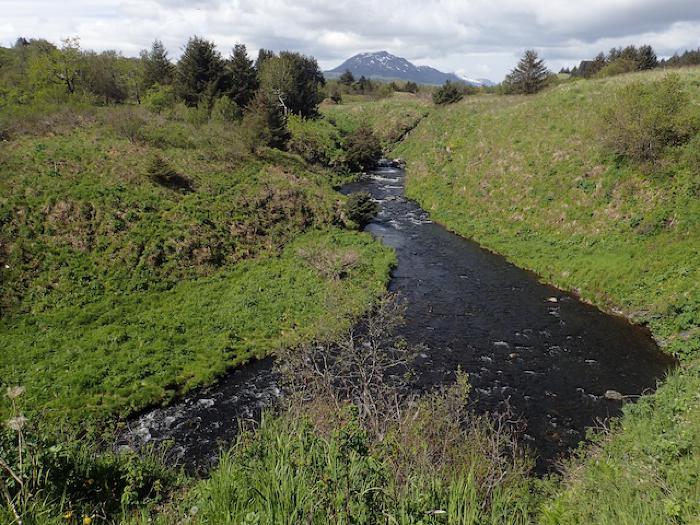River, Stream — Kuik

Despite its wet environment, Kodiak has few large rivers. The archipelago’s drainage systems are simple, reflecting its glacial history. Throughout the islands, short, steep, clear-water streams flow through glacially carved valleys draining small areas. Most streams are less than ten miles long and descend swiftly out of the mountains into adjacent bays. Rivers and larger streams tend to occur in bay heads and in a few valleys in southwestern Kodiak that were not completely filled with ice during the last glacial epoch.
For Alutiiq people, rivers are not only an important harvesting environment where salmon, trout, ducks, bears, and otters can be taken, but a means of travel. They provide avenues through Kodiak’s mountainous interior. The Portage River on northern Afognak Island provides an overland route to southern Afognak’s Kazakoff Bay, and from the head of Larsen Bay, it is an easy hike down the Karluk River to Karluk village at the river’s mouth. Alutiiq people once moved logs across larger lakes and rivers by tying them into rafts and paddling across. Elders remember paddling logs across Karluk Lagoon and Afognak Lake.
According to Alutiiq legend, the first woman formed rivers and lakes by spitting into ditches and holes. Like all features in the Alutiiq landscape, rivers have spirits that can be manipulated. One Alutiiq legend tells how an evil shaman captured a young woman searching for her lover. The shaman bewitched a river, which delivered him victims by sweeping them over a powerful waterfall. When the young woman succeeded in killing her captor, the shaman’s grip on the river was released. The treacherous falls disappeared, and she was able to paddle home safely.
